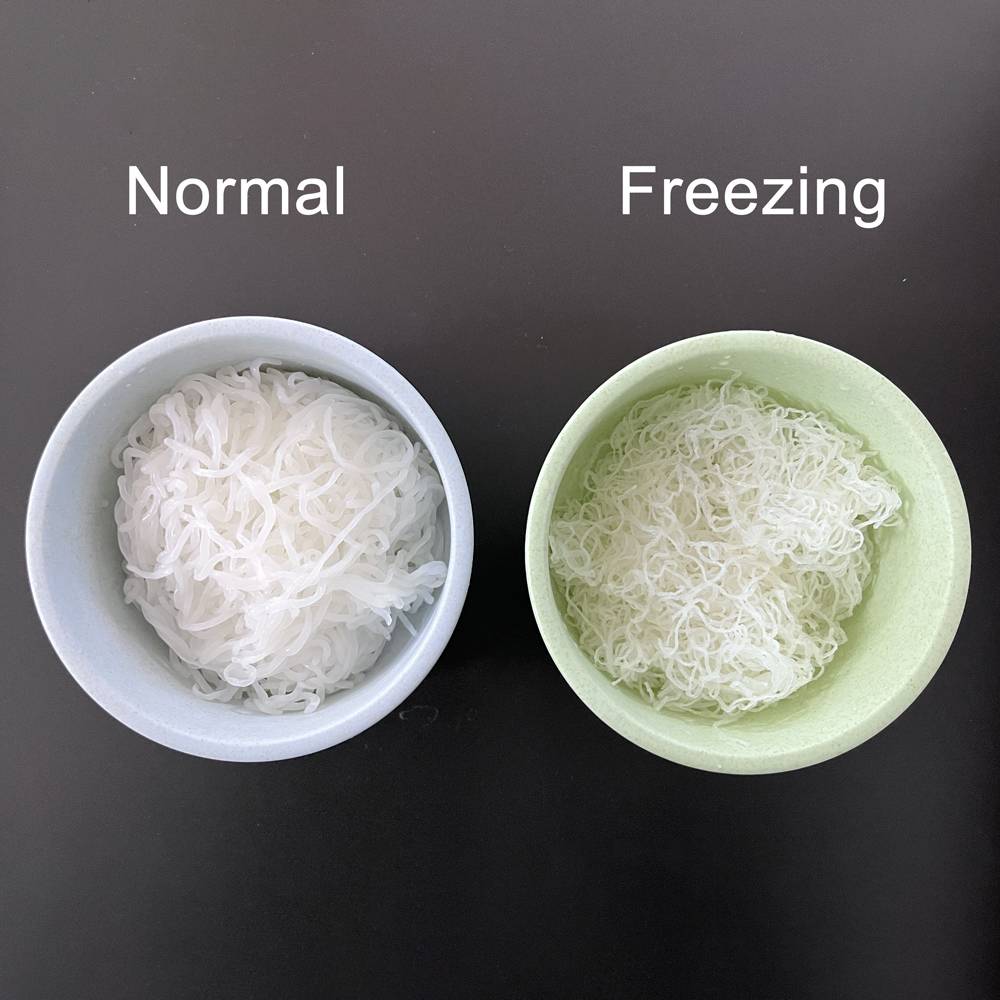
Contact Us through info@lovekonjac.com
If you’re someone who’s trying to lose weight or just maintain a healthy diet, chances are you’ve come across Shirataki noodles. This low-calorie, low-carb noodles made from konjac yam have become increasingly popular in recent years, and for good reason. They’re a great alternative to traditional pasta and noodles and can be used in a variety of dishes.
But what happens when you have leftovers or want to buy Shirataki noodles in bulk? Can you freeze Shirataki noodles? This is a common question, and in this article, we’ll explore the truth behind freezing Shirataki noodles.
Before we delve into whether or not Shirataki noodles can be frozen, let’s first understand what they are. Shirataki noodles are made from the root of the konjac yam, which is native to Asia. The root is ground into fine flour, mixed with water, and then shaped into noodles.
Shirataki noodles have a translucent, gelatinous texture and are very low in calories and carbohydrates. They’re also high in fiber, making them a great option for people looking to lose weight or maintain a healthy diet.

The short answer is no, you can’t freeze Shirataki noodles. Freezing Shirataki noodles can cause them to become rubbery, and chewy, and lose their flavor. This is because Shirataki noodles are made from water-soluble fiber, which can break down and lose its texture when exposed to extreme temperatures.

Additionally, Shirataki noodles already have a very long shelf life, so freezing them isn’t necessary. If you have leftover Shirataki noodles, store them in an airtight container in the refrigerator for up to three days.

To ensure your Shirataki noodles stay fresh, it’s important to store them properly. When you purchase Shirataki noodles, they’ll typically come in a liquid-filled bag. Drain the liquid and rinse the noodles under cold water for one minutes before using them in a dish.
Konjac noodles can’t be frozen though: due to the high water content of konjac flour, the noodles will disintegrate once thawed.
2. Store them in a cool, dry place, away from direct sunlight.
Heat and sunlight can both have negative effects on Shirataki noodles, causing them to become soft, mushy, or spoiled. By storing them in a cool and dry environment, you can help prevent the growth of bacteria or mold that can spoil the noodles. And keeping them away from direct sunlight can protect them from harmful UV radiation.

The ideal temperature range for storing Shirataki noodles is between 1°C and 15°C. Avoid storing them at temperatures higher than 15°C, as this can affect the viscosity of the noodles and compromise their quality. By keeping the noodles within this temperature range, you can help preserve their texture and quality for optimal enjoyment.

Now that you know you can’t freeze Shirataki noodles, here are some tips for using them in your dishes:
Shirataki noodles are a great low-carb, low-calorie alternative to traditional pasta or noodles. Since they have a neutral flavor, they work well in a variety of dishes.


2. Add a spoonful of vinegar to the noodles and let them soak for 1-2 minutes before rinsing again. This can also help soften the texture.

Marinate the noodles in a tomato-based sauce for a few minutes. This can give them a more pasta-like consistency.
If you’re not a fan of the gelatinous texture of Shirataki noodles, try mixing them with other noodles or vegetables to add some variety to your dish.

In conclusion, Shirataki noodles are a great option for people looking to maintain a healthy diet or lose weight. While they can’t be frozen, they have a long shelf life and can be stored in the refrigerator for up to three days. By following the tips outlined in this article, you can use Shirataki noodles in a variety of dishes and enjoy their many health benefits.
